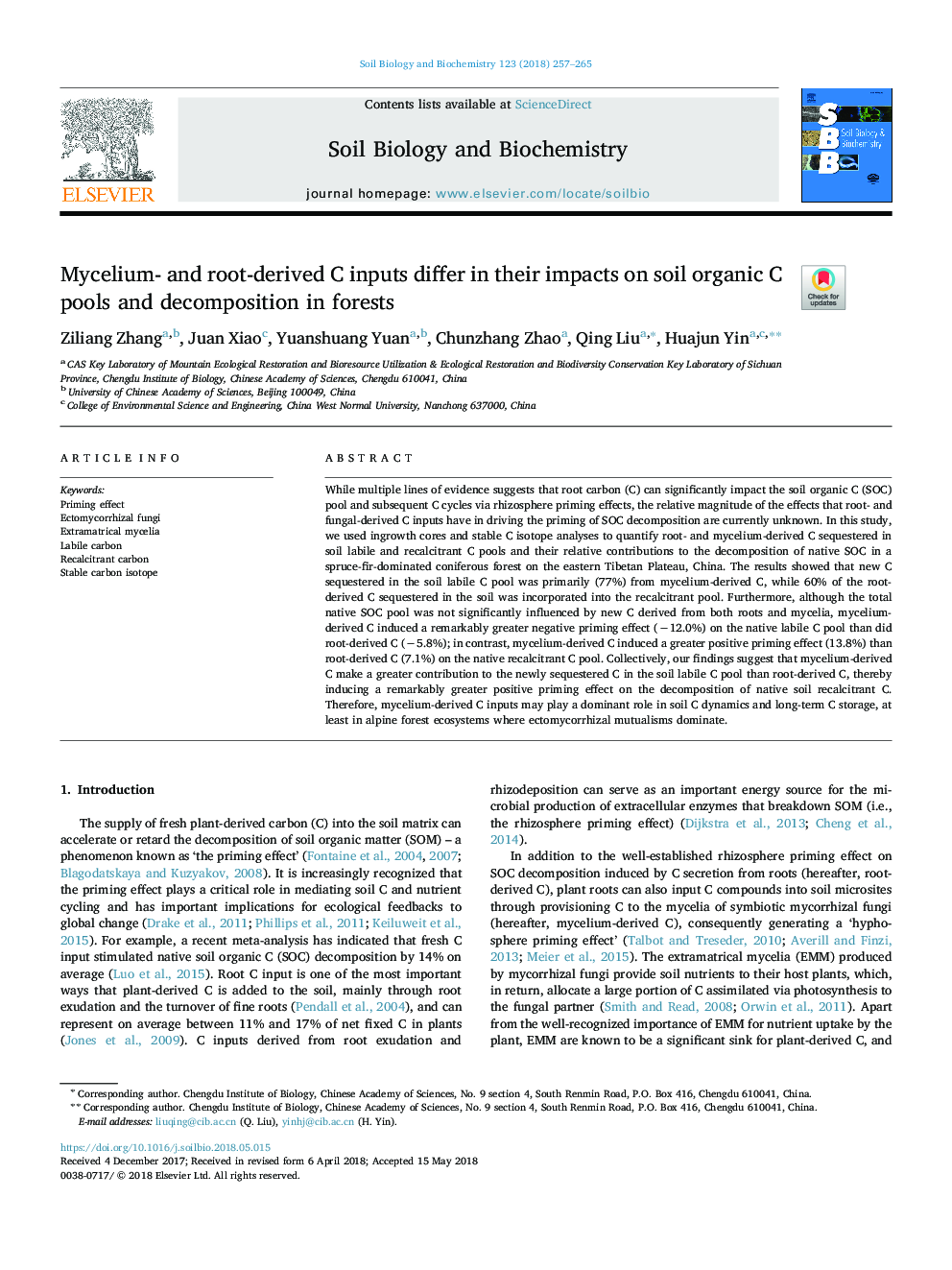| Article ID | Journal | Published Year | Pages | File Type |
|---|---|---|---|---|
| 8362704 | Soil Biology and Biochemistry | 2018 | 9 Pages |
Abstract
While multiple lines of evidence suggests that root carbon (C) can significantly impact the soil organic C (SOC) pool and subsequent C cycles via rhizosphere priming effects, the relative magnitude of the effects that root- and fungal-derived C inputs have in driving the priming of SOC decomposition are currently unknown. In this study, we used ingrowth cores and stable C isotope analyses to quantify root- and mycelium-derived C sequestered in soil labile and recalcitrant C pools and their relative contributions to the decomposition of native SOC in a spruce-fir-dominated coniferous forest on the eastern Tibetan Plateau, China. The results showed that new C sequestered in the soil labile C pool was primarily (77%) from mycelium-derived C, while 60% of the root-derived C sequestered in the soil was incorporated into the recalcitrant pool. Furthermore, although the total native SOC pool was not significantly influenced by new C derived from both roots and mycelia, mycelium-derived C induced a remarkably greater negative priming effect (â12.0%) on the native labile C pool than did root-derived C (â5.8%); in contrast, mycelium-derived C induced a greater positive priming effect (13.8%) than root-derived C (7.1%) on the native recalcitrant C pool. Collectively, our findings suggest that mycelium-derived C make a greater contribution to the newly sequestered C in the soil labile C pool than root-derived C, thereby inducing a remarkably greater positive priming effect on the decomposition of native soil recalcitrant C. Therefore, mycelium-derived C inputs may play a dominant role in soil C dynamics and long-term C storage, at least in alpine forest ecosystems where ectomycorrhizal mutualisms dominate.
Related Topics
Life Sciences
Agricultural and Biological Sciences
Soil Science
Authors
Ziliang Zhang, Juan Xiao, Yuanshuang Yuan, Chunzhang Zhao, Qing Liu, Huajun Yin,
